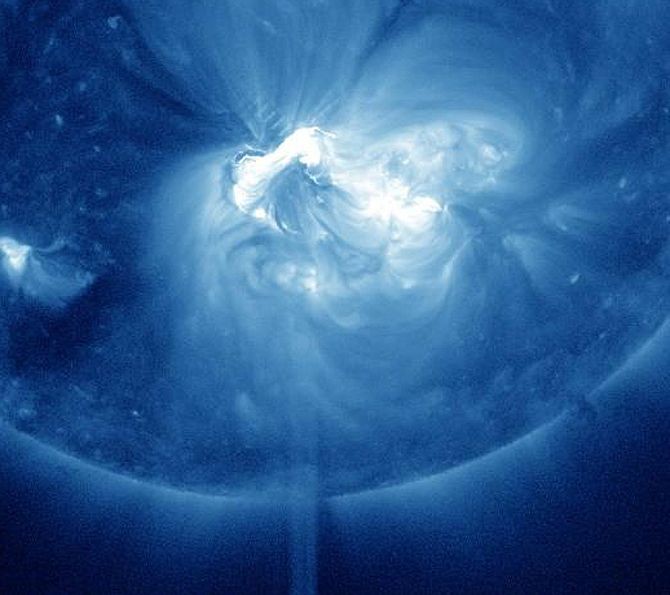Strong Sun Storm to Hit Earth, Massive Northern Lights to be seen on Weekend [PHOTOS + VIDEO]
The Coronal Mass Ejection (CME) from the strong Sun storm of 12 July is travelling at a much faster speed than previously thought and is heading towards the Earth. Scientists believe the phenomenon could cause a massive display of the Northern Lights (Aurora Borealis) over this weekend.
The Sun storm of Thursday, the second huge solar flare to occur within a week, unleashed a wave of Earth-directed plasma (CME) that is travelling at over 850 miles per second, according to observations from STEREO-B (the Solar Terrestrial Relations Observatory), Nasa said in a statement.
The powerful Sun storm erupted from a giant Sunspot in Active Region 1520, which rotated into view on 6 July and peaked on 12 July. The solar flare is expected to reach Earth on Saturday and will cause the display of the Northern Lights visible over northern US regions, according to predictions by Nasa and the National Oceanic and Atmospheric Administration's Space Weather Prediction Center (NOAA - SWPC). The CME may cause temporary disruption to GPS signals, radio communications and power grids but the condition is expected to last for only two days.
"The geomagnetic field is expected to be at quiet to minor storm levels with a slight chance for isolated periods at major storm levels on day one (14 July), due the arrival of the 12 July CME. Unsettled to active levels with a chance for minor storm periods are expected on day two (15 July), as effects of the CME continue. A return to predominantly quiet levels is expected on day three (16 July)," the SWPC said in a forecast update on Saturday.
Notwithstanding the disturbance to wireless communications, the Sun storm is surely going to be a blessing for sky watchers this weekend with Northern Lights shows.
The CME from the explosion on the Sun's surface will result in a collision between solar wind, ion flow, the Earth's magnetic field and atmospheric atoms and molecules. This causes energy released in the form of colorful lights, called the Northern Lights.
As you keep your eyes hooked to the sky looking for the Northern Lights, here is a YouTube video and a few Nasa pictures showing the strong Sun storm...



© Copyright IBTimes 2025. All rights reserved.






















